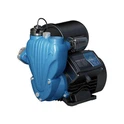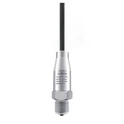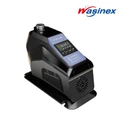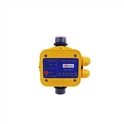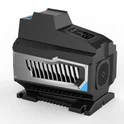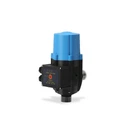Hey there! As a supplier of water pump pressure sensors, I've seen my fair share of issues with these little gadgets. A water pump pressure sensor is a crucial part of a water pump system, as it helps regulate the pressure and ensures the pump works efficiently. But sometimes, things can go wrong. In this blog post, I'm gonna walk you through how to troubleshoot a water pump pressure sensor.
Understanding the Basics
First off, let's quickly understand what a water pump pressure sensor does. It measures the pressure in the water system and sends a signal to the pump control unit. Based on this signal, the control unit decides when to turn the pump on or off. If the sensor malfunctions, the pump might not work properly, leading to low water pressure, continuous running, or other problems.
Common Symptoms of a Faulty Pressure Sensor
- Inconsistent Water Pressure: If you're getting fluctuating water pressure in your taps or showers, it could be a sign that the pressure sensor isn't reading the pressure accurately.
- Pump Runs Continuously: The pump is supposed to stop when the desired pressure is reached. If it keeps running, the sensor might be failing to send the stop signal.
- Pump Fails to Start: On the flip side, if the pump doesn't start when it should, the sensor may not be sending the start signal.
Troubleshooting Steps
Step 1: Check the Power Supply
The first thing you should do is make sure the pressure sensor is getting power. A loose connection or a blown fuse can cause power issues. Check the wiring to the sensor and make sure all connections are tight. If there's a fuse, check if it's intact. Sometimes, a simple power issue can mimic a sensor problem.
Step 2: Inspect the Sensor for Physical Damage
Take a good look at the pressure sensor. Look for any signs of cracks, leaks, or corrosion. Physical damage can affect the sensor's performance. If you notice any damage, you'll likely need to replace the sensor.


Step 3: Test the Sensor with a Multimeter
A multimeter is a handy tool for testing electrical components. Set your multimeter to the appropriate voltage or resistance setting, depending on the type of sensor. Disconnect the sensor from the system and connect the multimeter probes to the sensor terminals. Compare the reading you get with the specifications provided by the manufacturer. If the reading is way off, the sensor is probably faulty.
Step 4: Check the Pressure Switch Settings
Some water pump pressure sensors work in conjunction with a pressure switch. Make sure the pressure switch settings are correct. The cut - in and cut - out pressures should be set according to the requirements of your water system. You can usually adjust these settings with a small screwdriver.
Step 5: Look for Clogs or Blockages
Sometimes, a clogged or blocked sensor port can cause inaccurate pressure readings. Check the sensor port for any debris, dirt, or mineral deposits. You can use a small brush or compressed air to clean the port. This simple step can often fix the problem.
Related Accessories and Their Impact
When troubleshooting a water pump pressure sensor, it's also important to consider the other accessories in the system. For example, a Water Pump Float Switch can work in tandem with the pressure sensor. If the float switch is malfunctioning, it can affect the overall operation of the pump system.
Similarly, an Automatic Pump Mechanical Switch can play a role. A faulty mechanical switch might send incorrect signals to the pump, making it seem like the pressure sensor is at fault when it's actually the switch.
And don't forget about the Temperature Transmitter. Extreme temperatures can sometimes affect the performance of the pressure sensor. If the temperature transmitter isn't working properly, it might not be providing accurate temperature data, which could impact the sensor's calibration.
When to Replace the Sensor
If you've gone through all the troubleshooting steps and still can't fix the problem, it's probably time to replace the water pump pressure sensor. It's important to choose a high - quality sensor that's compatible with your water pump system. As a supplier, I can tell you that investing in a good sensor will save you a lot of headaches in the long run.
Conclusion
Troubleshooting a water pump pressure sensor might seem daunting at first, but by following these steps, you can usually figure out what's going wrong. Remember to check the power supply, look for physical damage, test the sensor with a multimeter, and inspect the related accessories. If all else fails, don't hesitate to replace the sensor.
If you're in the market for a new water pump pressure sensor or any of the related accessories, feel free to reach out. We're here to help you find the right products for your needs. Whether you're a homeowner looking to fix a small water system issue or a professional in the industry, we've got you covered. Contact us to start the procurement process and let's get your water pump system running smoothly again.
References
- "Water Pump Systems: Operation and Maintenance" by John Doe
- "Pressure Sensor Handbook" by Jane Smith

